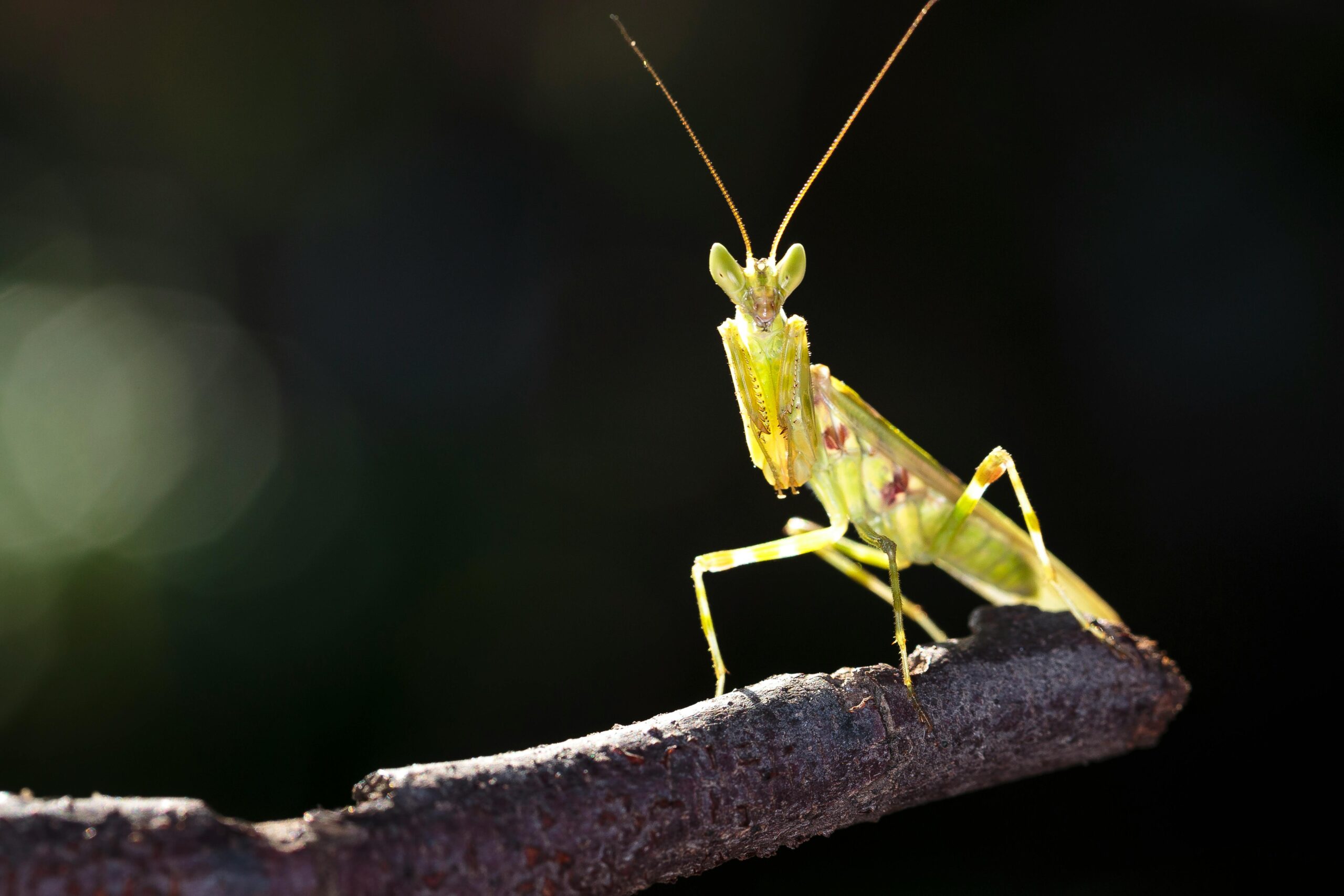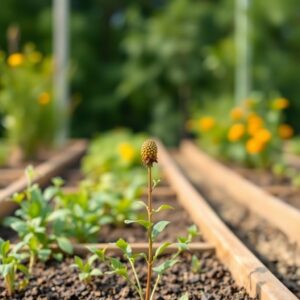As winter's chill fades and the first hints of spring emerge, it's time to roll up our sleeves and prepare our gardens for the vibrant season ahead. I've always found this transition period exhilarating – there's something magical about coaxing life back into dormant soil and witnessing the gradual awakening of nature.
Prepping your garden for spring needs planning, knowledge, and effort. Whether you're a seasoned green thumb or a budding enthusiast, the steps you take now will set the stage for a bountiful and beautiful garden throughout the growing season.
Prepare your garden for spring with our comprehensive guide. Learn essential soil preparation, planting tips, and maintenance strategies to ensure a thriving garden all season long
So grab your gardening gloves, and let's dig in!
The Foundation: Soil Preparation
Healthy soil forms the cornerstone of a productive garden, and spring is the perfect time to give it some much-needed attention.
Soil Testing: Know Your Ground
Before making any changes, conduct a soil test. This provides valuable insights into your soil's pH and nutrient levels.
Most local extension offices offer affordable testing services.
I recommend testing your soil every 2-3 years to stay on top of its changing needs.
Amending Your Soil
Once you have your test results, address any deficiencies. Adding organic matter like compost or well-rotted manure improves soil structure and nutrient content.
If your soil is too acidic, you might need to add lime.
For overly alkaline soil, sulfur can help balance it out.
To Till or Not to Till?
Traditional gardening often involves tilling the soil, but there's a growing movement towards no-till methods. No-till gardening preserves soil structure, keeps moisture, and protects useful soil organisms.
If you decide to till, wait until the soil is dry enough to crumble easily in your hand. Tilling wet soil can damage its structure and create hardpan.
Pruning and Cleanup: Setting the Stage
With your soil prepped, turn your attention to existing plants and overall garden hygiene.
The Art of Pruning
Pruning shapes plants for optimal growth and health. For most deciduous trees and shrubs, late winter or early spring (before new growth begins) is the ideal time to prune.
Always use clean, sharp tools to prevent disease transmission and confirm clean cuts. Make cuts at a 45-degree angle just above a bud or branch collar to promote healing and prevent water from pooling on the cut surface.
Perennial Care
Spring calls for cutting back dead foliage from perennials and ornamental grasses. It's also an excellent opportunity to divide overcrowded perennials.
This promotes healthier growth and gives you free plants to expand your garden or share with friends.
When dividing perennials, use a sharp spade or knife to separate the plant into sections, ensuring each division has a healthy root system and several shoots. Replant immediately and water thoroughly.
Composting: Turning Waste into Gold
If you haven't started composting yet, now's the time. Turn your existing compost pile and incorporate it into your garden beds. Composting reduces waste and provides your garden with nutrient-rich organic matter.
To create a balanced compost, aim for a mix of "green" materials (nitrogen-rich items like grass clippings and kitchen scraps) and "brown" materials (carbon-rich items like dried leaves and twigs). Maintain a ratio of about 3 parts brown to 1 part green for optimal decomposition.
Pest Management and Weed Control: Proactive Defense
Addressing potential pest and weed issues early can save you a lot of headaches later in the season.
Weed Management Strategies
Hand-pull early spring weeds before they set seed. Apply a layer of organic mulch around your plants to suppress weed growth and keep soil moisture. Aim for a 2-3 inch layer of mulch, keeping it away from plant stems to prevent rot.
Consider using landscape fabric in areas prone to persistent weed problems. This physical barrier blocks weed growth while allowing water and nutrients to reach plant roots.
Integrated Pest Management
Inspect overwintering plants for signs of pests or disease. Remove any infected plant material to prevent issues from spreading.
Look for discolored leaves, unusual growths, or visible insects.

Consider introducing useful insects like ladybugs or praying mantises as natural pest control. These predatory insects feed on common garden pests, reducing the need for chemical interventions.
Install bird feeders and baths to attract insect-eating birds to your garden. Many bird species consume large quantities of garden pests, providing natural pest control while adding beauty and song to your outdoor space.
Planting and Garden Planning: Bringing Your Vision to Life
With the groundwork laid, it's time to plan and plant your spring garden.
Crop Rotation: A Long-Term Strategy
Implement a crop rotation plan to prevent soil depletion and reduce pest and disease issues. This strategy proves especially important for vegetable gardens.
A simple four-year rotation might look like this:
- Legumes (peas, beans)
- Leaf crops (lettuce, spinach)
- Fruiting crops (tomatoes, peppers)
- Root crops (carrots, potatoes)
This rotation helps balance soil nutrients and breaks pest and disease cycles.
Companion Planting: Nature's Synergy
Utilize companion planting strategies to maximize space and promote plant health. For example, planting marigolds near tomatoes can reduce pest problems by up to 50%.
Some classic companion planting combinations include:
- Tomatoes and basil: Basil repels tomato hornworms and improves tomato flavor
- Carrots and onions: Onions deter carrot flies
- Corn, beans, and squash (the "Three Sisters"): Beans fix nitrogen, corn provides support, and squash shades the soil
Seed Starting: Getting a Head Start
For plants with longer growing seasons, start seeds indoors 6-8 weeks before the last frost date. Use a soil blocker or biodegradable pots to minimize transplant shock when it's time to move them outdoors.
When starting seeds indoors:
- Use a sterile seed-starting mix to prevent damping-off disease
- Provide consistent moisture and warmth for germination
- Once seedlings emerge, confirm they receive adequate light (14-16 hours daily)
- Begin fertilizing with a diluted liquid fertilizer once true leaves appear
Innovative Techniques to Consider
Biochar: Ancient Wisdom for Modern Gardens
Incorporating biochar into your soil can improve water retention and nutrient availability. This charcoal-like substance has been used for centuries in the Amazon to create incredibly fertile soil.
To use biochar:
- Charge it first by soaking in compost tea or liquid fertilizer
- Mix it into your soil at a rate of about 10% by volume
- Reapply every few years to maintain its benefits
Mycorrhizal Fungi: The Underground Network
Adding mycorrhizal fungi to your soil can enhance nutrient uptake, potentially increasing it by up to 100% for some plants. These fungi form a symbiotic relationship with plant roots, extending their reach and improving overall plant health.
Apply mycorrhizal fungi:
- Directly to plant roots when transplanting
- Mix into seed-starting soil
- Water into established plants using a liquid formulation
Hugelkultur: Mimicking Nature's Design

Create hugelkultur beds by burying wood and organic matter under your soil. As the wood decomposes, it improves water retention and soil fertility over time, creating a self-sustaining garden bed.
To build a hugelkultur bed:
- Dig a trench about 1-2 feet deep
- Fill with logs, branches, and other woody debris
- Add nitrogen-rich materials like grass clippings or manure
- Cover with soil, creating a mound
- Plant directly into the mound
Climate Adaptation Strategies
As our climate changes, likewise must our gardening practices. Here are some strategies to consider:
Season Extension Techniques
Use cold frames or hoop houses to protect plants from late frosts and extend your growing season. These structures allow you to start planting earlier and harvest later into the fall.
To build a simple cold frame:
- Construct a box from wood or concrete blocks
- Angle the top slightly to the south for most sun exposure
- Cover with old windows or clear plastic sheeting
- Use automatic vent openers to prevent overheating on sunny days
Water Conservation Methods
Install drip irrigation or use ollas (buried clay pots) for effective watering. These methods deliver water directly to plant roots, reducing waste and improving plant health.
To use ollas:
- Bury unglazed clay pots up to their necks in your garden beds
- Fill with water
- The porous clay slowly releases water into the surrounding soil
- Refill as needed
Heat-Tolerant Varieties
Research and plant varieties that are adapted to warmer temperatures and changing climate conditions. Many seed companies now offer "climate-ready" varieties specifically bred for resilience.
Look for traits like:
- Deep root systems for drought tolerance
- Heat-resistant flowering for consistent fruit set
- Pest and disease resistance to combat emerging threats
Common Problems to Avoid
Overwatering
More plants die from overwatering than underwatering. Always check soil moisture before watering.
Insert your finger about an inch into the soil – if it feels dry at that depth, it's time to water.
Overcrowding
Give plants enough space to grow. Overcrowding can lead to poor air circulation and increased disease risk.
Follow spacing recommendations on seed packets or plant labels, and don't be afraid to thin seedlings.
Ignoring Plant Hardiness Zones
Make sure the plants you choose are suitable for your climate zone. Your local extension office can provide information on your specific hardiness zone and recommended plants.
Neglecting Soil Health
Healthy soil leads to healthy plants. Don't skip soil preparation steps.
Regularly add organic matter and avoid compacting the soil by creating designated paths in your garden.
Planting Too Early
Be patient and wait until after the last frost date to plant tender annuals and vegetables. Use a frost date calculator based on your specific location to determine safe planting times.
Exercises to Reinforce Learning
Soil Analysis
Collect soil samples from different areas of your garden and compare their textures, colors, and compositions. Note differences and consider how they might affect plant growth.
Companion Planting Design
Create a garden plan that incorporates companion planting principles. Research useful plant combinations and design a layout that maximizes these relationships.
Compost Experiment
Start two compost piles – one using traditional methods and another using a more innovative technique like Bokashi composting. Compare the results over time, noting differences in decomposition rate and final compost quality.
Seed Starting Journal
Keep a detailed journal of your seed starting process, noting germination rates, growth rates, and any challenges encountered. Use this information to refine your techniques for future seasons.
Climate Adaptation Research
Research how climate change is affecting gardening in your specific region and develop a plan to adapt your garden accordingly. Consider changes in temperature, precipitation patterns, and pest populations.
People Also Asked
When should I start preparing my garden for spring?
Begin preparing your garden for spring as soon as the ground thaws and becomes workable, typically 4-6 weeks before your last expected frost date.
How do I improve my garden soil?
Improve garden soil by adding organic matter like compost, using cover crops, and avoiding tilling when possible to preserve soil structure.
What are the best vegetables to plant in early spring?
Cool-season crops like peas, lettuce, spinach, and radishes are excellent choices for early spring planting.
How often should I fertilize my garden in spring?
Fertilize your garden in spring after soil testing to determine specific needs. Generally, apply a balanced fertilizer once at planting time and again midway through the growing season.
Can I plant perennials in early spring?
Yes, early spring is an excellent time to plant perennials, especially bare-root varieties, as they have time to establish before summer heat arrives.
How do I protect my plants from late spring frosts?
Protect plants from late spring frosts by covering them with blankets, row covers, or cloches, or by using heat-generating methods like water-filled containers near plants.
What's the best way to control weeds in my spring garden?
Control weeds in your spring garden through regular hand-pulling, mulching, and using ground covers to suppress weed growth.
How can I attract useful insects to my garden?
Attract useful insects by planting a diverse range of flowering plants, especially native species, and avoiding broad-spectrum pesticides.
Is it necessary to rotate crops in a small garden?
Crop rotation is useful even in small gardens, as it helps prevent soil depletion and reduces pest and disease issues. Consider vertical gardening or container gardening to maximize space for rotation.
How do I prepare my garden tools for spring use?
Prepare garden tools for spring by cleaning them thoroughly, sharpening blades, oiling moving parts, and replacing any damaged tools.
Key Takeaways
- Start with healthy soil through testing and suitable amendments
- Implement proactive pest and weed management strategies
- Use companion planting and crop rotation to maximize garden health and productivity
- Consider innovative techniques like biochar and mycorrhizal fungi inoculation
- Adapt your gardening practices to changing climate conditions
